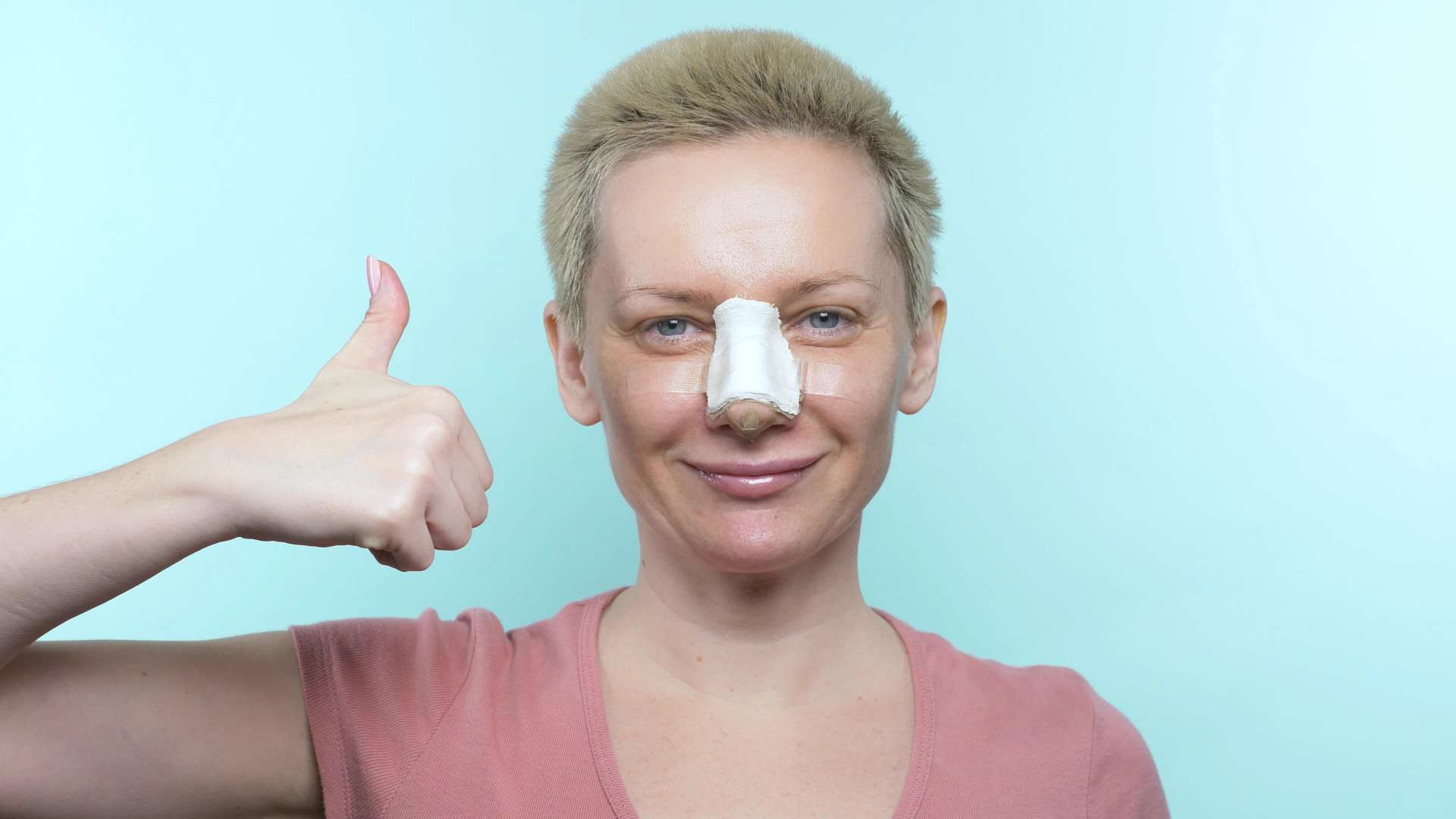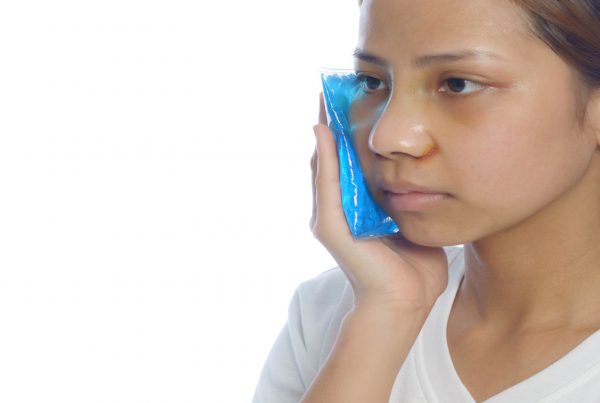Nasal Splints
Nasal splints are considered inevitable for most nasal surgeries. It has an important role in patients’ recovery period after their surgery. Therefore, if you are thinking of having nose surgery, you should be aware of how and why it will be placed on your noses. For this purpose, we prepared the following article discussing the related topics of nasal splint that each patient should know.
What is a Nasal Splint?
Nose splints or rhinoplasty splint are small devices used for stabilizing the nose’s new shape after the nose job. Plastic and silicone are the major material used in nasal splints. Based on the type of nasal surgery, nasal splints place either inside (eternal nose splint) or outside (external nose splints) of the nose. Although it is a very simple procedure, it will profit patients greatly after their surgeries. The nasal splints will be installed on your noses before leaving the hospital. Also, your doctor should inform you about how to care for them and when to remove the splints.
Why Do You Need Nose Splints?
Nose splints may be used for different patients depending on their condition and the type of nose surgery. Nose splint is very practical and provides many benefits for patients. In below, we list some of the purposes of the usage of nasal splints after nose surgeries.
- Maintaining the nose’s new shape
- Reduce the swelling and bruising
- Protect the nose from injuries
- Decrease and control nasal bleeding
- For having better breathing function
- Reduce the post-operative pain and discomfort
In which Nasal Surgeries Nasal Splints will be Used?
As mentioned, the nasal splint can be used for different patients who are experiencing different conditions after the surgery. Furthermore, the type of the surgery may or may not necessitate the surgeon to place the nose splints on the patient’s nose. In the following, we will examine the effectiveness of nasal splints in different types of nasal surgeries.
-
Nasal splints for rhinoplasty`
Nose splints may be used in both open and closed rhinoplasty. However, it will be more useful in an open nose job procedure.
-
Nasal splints for Septoplasty
Placing the nasal splints is necessary for the septoplasty procedure as it is important to protect the new nasal structures from traumas. The nasal splint will help the deviated septum heal better.
-
Nasal splints for sinus surgery
Nasal splints place at the end of the sinus surgery to protect the nose from outside threats. Balloon sinuplasty is another name of this surgery. To get more information about this procedure, you should see Flora’s balloon sinuplasty page HERE.
-
Nasal splints for turbinate reduction
After the turbinate reduction, it is recommended to a surgeon use nasal splints for covering the nose after the surgery.
Different Types of Nasal Splints
There are two major types of nasal splints that are used for different purposes and various patients, external splints and internal splints. The type of nasal splints utilized for patients depends on the type of nose surgery they have.
-
External nasal splints
These splints will be set on the nose surface after the nose surgery. External splints will cover the nose from outside threats. The usage of this type of nasal splint is more frequent than the internal one. Commonly the surgeon will attach these splints to patients’ noses after the open type of rhinoplasty and septoplasty.
-
Internal splints
unlike external splints, internal nasal splints are placed into the nose. The surgeon will put these kinds of nose splints inside the patient’s nostrils and attach them to the inside wall of the nostril with stitches. Regularly, these nasal splints will be used after closed types of rhinoplasty and septoplasty.
What are Nasal Splints Made of?
Nasal splints are not so huge in their sizes. They are relatively thick and shaped like a trapezoid (external) and curve (internal). A Nasal splint can be made of several materials including metals, plastics, aluminum, foams, and other materials. However, the two types of them which are mostly practiced in nasal surgeries are silicone splint and plastic splints. The materials, depending on the type of the surgery, might be firm or flexible. The stiff splints are generally used in making the external splints, while the internal splint should be flexible enough to place inside the nose. In the case of soft splints, the patient may experience some difficulties breathing through their nose. This problem will be gone as the splints are discharged after 7-10 days.
How does a Nose Splint Work?
Nasal splints are employed for covering and maintaining the shape of patients’ new noses after the surgery. It can be either placed inside the nostril or outside the nose structure. These splints will be attached until the fragile tissues of the nose become fully healed. Internal nose splints are very thin and curved-shape tube which are placed at the opening of the nostrils to hold the new shape of the nose after the surgery. External nasal splints are wider shaped like a trapezoid and will be placed across the nasal bridge. Patients wouldn’t need to buy nasal splints. Your plastic surgeons should supply the special kinds of nasal splints you are requiring. The nasal splint will be removed by your doctor during a medical appointment after 7-10 days.
How Nasal Splints will be Placed on the Nose?
During the nose surgery procedure, after surgeons applied the modifications and closed the incisions, he will place the nasal splints. The location of the nasal splints can vary for different types of nasal surgeries. It can be either placed on the inside (internal splints) or outside (external splints) of the nose. The surgeon may use some stitches to fix the splints to the nose structure after he placed them. Later, after the new nasal tissues become fully healed and established, these splints should be removed by doctors during a splints removal session. It usually takes a week or two for patients to bear nasal splints on their noses.
Nasal Splints; Dos and Don’ts
Nasal splints’ main profit for patients is to provide them with more trustworthy recovery after their surgeries. Patients should also consider some guidelines for taking care of their splints. In the following, we list the Dos and Don’ts that you should consider while having these splints on your nose. Some of the following directions are referred from healthline.com
- Take bath instead of taking a shower
- Use the saline nasal spray to clean the nasal splints
- Brush gently
- Do not work out
- Do not blow into your nose
- Avoid sneezing
- Don’t wear glasses
The Nasal Splints Removal Procedure
Most patients are in need of nasal splints for the first week after the surgery. As soon as their delicate new nose structure healed, the nasal splint should be removed. Some patients are hurried for removing their nasal splints as they find them bothersome and hard to tolerate. However, if the splints are removed earlier than their time, serious complications may result for patients. These splints should be removed at the right time and in the right place. During a medical visit, your doctor should remove the splints after he/she made sure that your nose is ready for the splint removal.
How Much Does a Nasal Splint Cost?
The costs of different nasal splints are varying. Based on the material used and the type of the splint the cost for a specific kind of nasal splint may vary from others. Moreover, you may find the cheaper or more expensive of the same nasal splint in different countries. Globally, the average costs of various types of nasal splints are between $30 and $150. The good news for patients who are looking for a cheaper price is that they can find their required type of nose splint at the most economical price in Iran. The cost of nasal splints, as well as other cosmetic services, is very affordable in Iran. Besides the low cost, the quality of nasal splints is superior in our country. These advantages for having a cosmetic procedure in Iran make it a popular destination for international nose surgery patients. You can see the other benefits of having your cosmetic procedure in Iran below:
- The high-experienced and skillful Iranian plastic surgeons and ENT specialists
- The high-tech hospitals and clinics in Iran for cosmetic surgeries
- The high satisfaction of Iran’s medical tourist from their cosmetic surgeries’ result
- The outstanding hospitality of Iranian
- The beauties of Iran
- The safety provided in Iran for medical tourists; Iran is listed among the safest countries for traveling according to the travelriskmap.com
If you still need more information about the cost of rhinoplasty and its various types, please visit HERE to see our other article. We prepared a comprehensive article about the cost of the different nose job surgeries.
What Nasal Splints are Flora’s Doctors Used in their Surgeries?
Because of the high popularity of cosmetic surgeries (especially nose surgeries) in Iran, there are many highly skilled surgeons working in our country. Most skilled among them have been employed by Flora medical tourism agency for performing our customers’ nose surgeries. Our surgeons are promising the most top quality for your nose surgeries and this also includes high-quality nasal splints. We prepare the nasal splints used for our patients from the best manufactures in the world. As a result, Flora’s beloved patient wouldn’t feel any discomfort caused by their nasal splints. You can plan your needed nasal surgery with Flora simply by contacting our online team HERE. They will tell you more about the other details and benefits which our agency provides for its customers.
What Should I do when my Nasal Splints Loosen?
This is normal for nasal splints to loosen after few days. This loosening is a sign that your nose’s swelling decreased. Hence, patients shouldn’t worry themselves over this circumstance. Usually, splints removal time and its loosening are concurrent. However, if you are experiencing discomfort caused by a loose nose splint, you should notify your doctor immediately.
Nasal Splints; Risks and Side Effects
Although there is no risky side effect for nasal splints, few problems are probable to occur for patients. We list these side effects and risks below:
-
Pain
Nasal splint may cause some discomforts for patients. This pain is not so harsh and can be controlled well.
-
Loosening
After few days, the splint may start to loosen on the patient’s nose. Although it may cause some discomforts it’s not threatening at all.
-
Nasal splints may get coated or bloody
Nasal splints can get dirty during the recovery timeline. To avoid this complication to occur patients should clean their splints from time to time.
-
Infection
Rarely, a nasal splint may cause infection for patients. The infection can be treated by taking antibiotics.
Needless to say that these side effects will be treated after splints have been removed.
When should I Call my Doctor?
Having a nasal splint may have some side effects but it’s not dangerous at all. However, patients can contact their doctor to get help for treating the problems caused by splints. For Flora’s patients, there is no need for worries over these complications as our follow-up team will monitor your condition daily. In general, patients should inform their doctors in the following conditions:
- Experiencing harsh pain in the nose
- When nasal splints increased the swelling
- Intense Nose bleeding
- Having intolerable difficulties in breathing
- When a nasal splint fell from your nose
- Tapping the nose after splints removal
After the doctor removed the nasal splints from patients’ noses, he should give instructions on how to tape their noses. The doctor’s direction on taping the nose after the surgery is necessary for having a finer recovery. Patients should call their doctors if they have faced any problem with tapping their noses. It should be noted that Flora’s beloved patients will be fully directed for taping their noses after the surgery. Further, our online follow-up team will check your condition periodically. The nose taping should be continued for at least a month after the surgery. Some patients may need to tape for 3 months. To get more information on the nose tapping procedure, please visit Flora’s nose tapping page HERE.
Last Word
As we examined, nasal splints are playing an important role in a patient’s recovery procedure after nasal surgeries. In the above article, we showed you how these splints may work for patients besides some other related discussion. It is believed that nose surgery patients wouldn’t have any questions regarding the issues of nasal splints. However, if you still seek more information, you can contact Flora’s online team. Our team of medical experts will help you eagerly to get any information you need. We’ll be there for you 24\7. Contact us by clicking HERE.
Nasal Splints Frequently Asked Questions
What are nose splints used for?
Nasal splints place on the nose of patients after they nasal surgeries. They have various functions and benefits for patients. The most major among them are stabilizing the nose and protecting it from outside threats.
What do nasal splints look like?
Nasal splints are usually made of silicone and plastic. They are relatively thin and small. They may have a curved shape (internal nose splint) or shape like a trapezoid (external nose splint).
How long are nasal splints?
External nose splints tend to be longer than internal ones. They are usually as long as the nose bridge because they should cover the lower part of the nose too.
How big are nasal splints?
Nasal splints are not so big in their size. They are usually narrow and small-shaped.
What to expect after nasal splints are removed?
The splints should be removed when the nasal structure becomes fully healed after the surgery. After the patients’ splints are removed from the nose, they should tape their noses for 1-3 months. For more information on nose taping procedures after the nose surgeries, you can visit Flora’s taping nose page HERE.
Does removing splints hurt?
Usually, patients feel no pain during the splint removal procedure. However, if their skin has been stretched during the removal, they may feel some discomfort.
Can you breathe with nose splints?
Having difficulty breathing through the nose is a side effect of nasal splints. Tough, they occur unusually for patients. A patient who is experiencing this side effect should breathe through their mouth until the splint removal day arrives.
Are nasal splints uncomfortable?
Usually, nasal splints are not irritating for patients. In some cases, some unqualified nose splints (especially internal splints) may result some trouble for patients. This discomfort should be tolerated by patients whereas it is necessary for them to have nasal splints on their noses after their surgery.
Can nasal splints fall out?
As the swelling of the nose decreases, the nasal splints may loosen. If they became too loose for covering the nose, they may fall out. In these cases, the patient should inform their doctors about the problem ASAP.
Do nasal splints cause headaches?
Headaches are possible to occur for patients after their nose surgery. In some cases, it may relate to the nasal splints. However, it can be easily controlled by taking pain relievers.
How to clean nasal splints?
The patient should clean their nasal splint regularly after their nose surgery. Cleaning is essential because it helps patients breathe better and reduce the infection. It also will make the removal of the splints easier. Patients should utilize saline rinse or spray for cleaning their nasal splints. Your doctor may also prescribe you similar techniques and procedures that you have to consider.








Recent Comments